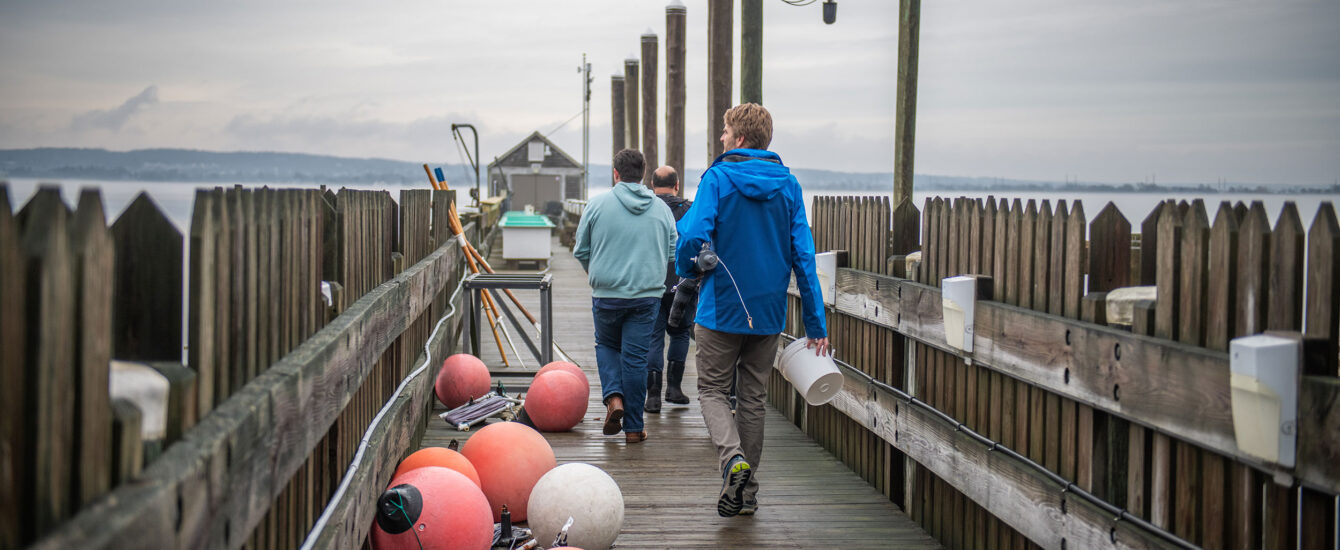
Funded by $1.1 million in NSF grants, researchers dive into undersea war of the microbes
Many of us hear about cyanobacteria when summertime blooms of toxic blue-green algae lead to beach closings at freshwater ponds and lakes. But cyanobacteria are not all bad — those growing in the ocean produce more than 12 percent of the oxygen we breathe, according to Clark Biology Professor Nathan Ahlgren.
“Cyanobacteria form an important foundation of life in the oceans,” says Ahlgren, a microbial ecologist. At the bottom of the oceans’ food chain, “they produce organic material and oxygen, just like plants on land do.”
The most abundant cyanobacteria in the ocean are Synechococcus and its sister genus, Prochlorococcus. Together, these single-celled microbes carry out about 25 percent of the photosynthesis in the ocean, and because half of the photosynthesis on earth occurs in the ocean, he explains, that means that “in every breath you take, some of that oxygen came from these tiny little things.”
Because cyanobacteria are so key to supporting life on earth, it’s critical to understand how they interact with their environment and with other organisms, especially the viruses — called cyanophage — that infect them.
“It’s important to figure out what viruses are killing these cyanobacteria, how they are killing them, and why,” Ahlgren says. “There are some estimates that viruses might kill half of the Synechococcus cells every day and then the Synechococcus regrows to replace them. So there is constant pressure put on the cyanobacteria to grow and survive.”
In many places, the number of cyanobacteria in the ocean roughly remains the same from day to day, he notes. “But in reality, there’s this whole ecosystem that’s churning, this warfare of viruses and hosts happening back and forth, that is potentially changing the species or the details of who is there.”
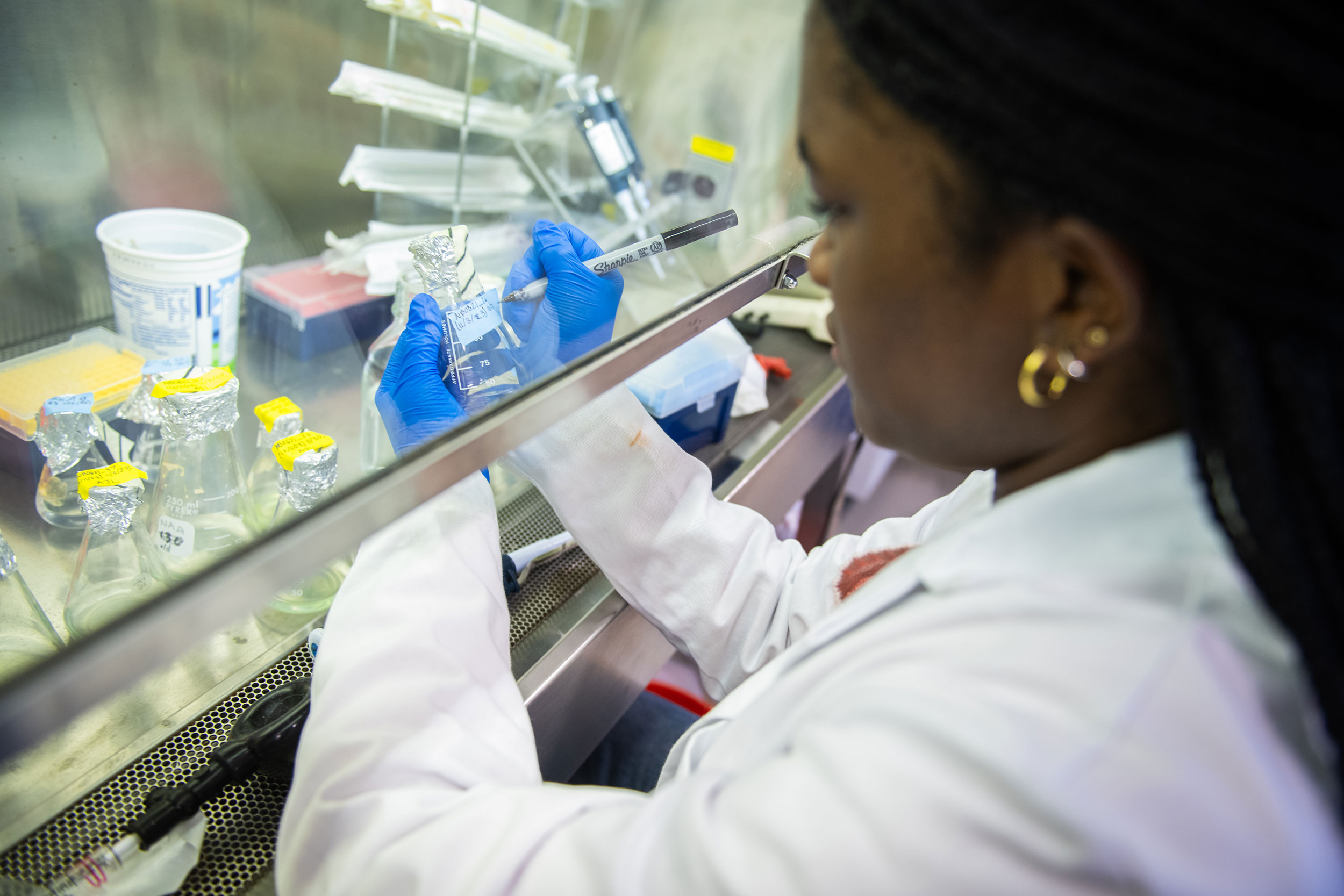
Study funded by $1.1 million in NSF grants
Funded by $1.1 million in grants over four years from the National Science Foundation, Ahlgren and his collaborator, Biology Professor Marcie Marston of Roger Williams University, are using a decade of water samples gathered from Narragansett Bay in Rhode Island to examine these interactions between the cyanophage and their host, Synechococcus cyanobacteria.
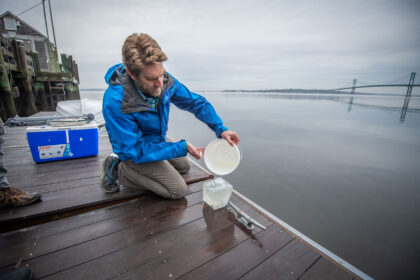
“There are probably hundreds of species of Synechococcus, and each one is slightly different,” Ahlgren says. “Of the viruses that infect Synechococcus, there are maybe thousands, maybe tens of thousands. So, we have this complex community of thousands of things that are all interacting with each other. With this grant, we are opening up the box, looking under the hood, and sorting out the details to understand what’s happening in that ecosystem.”
Over three years, teams at Clark and Roger Williams have isolated more than 100 Synechococcus strains and 200 viruses from the samples. Ahlgren credits a former undergraduate student — Campbell (Cammie) MacKenzie ’21 — with isolating most of the Synechococcus. MacKenzie’s research resulted in a 2022 article, “Genome Sequence of the Estuarine Synechococcus sp. Strain NB0720_010” in Microbial Genome Resources, on which she was first author; her co-authors were Marston; Javier Tabima Restrepo, assistant professor of biology; and Ahlgren.
With the microbes isolated and their DNA purified, “we can use DNA sequencing technology to figure out which viruses are in that community,” Ahlgren says, “and to answer questions like, ‘Are they abundant? Are they just there for a short time? Are they there all the time?’ We’re looking for seasonal or temporal patterns.”
The project in Narragansett Bay builds off work published by Emily Dart, Ph.D. ’23, who characterized cyanophage patterns over five years in waters off of California.
“It’s a bit mind-boggling to think that something that you can’t really see can have major environmental or anthropogenic effects.”
— Devon Rose Leaver ’24, M.S. ’25
In the lab, the researchers will cross-infect the viruses with the Synechococcus strains, pairing different combinations of isolates, to study the microbes’ interactions.
“We’re looking at these patterns in detail,” he says. “Does everything infect everything else? Do viruses affect closely related Synechococcus? Or do some viruses infect a lot, and some don’t?”
Their research eventually could be applied to other environments where viruses attack bacteria, from freshwater lakes and ponds to the human intestine, according to Ahlgren.
“Our expectation,” he says, “is that some of the rules about how this churning, constantly changing community of bacteria and phage are working probably would be applicable to many other ecosystems.”
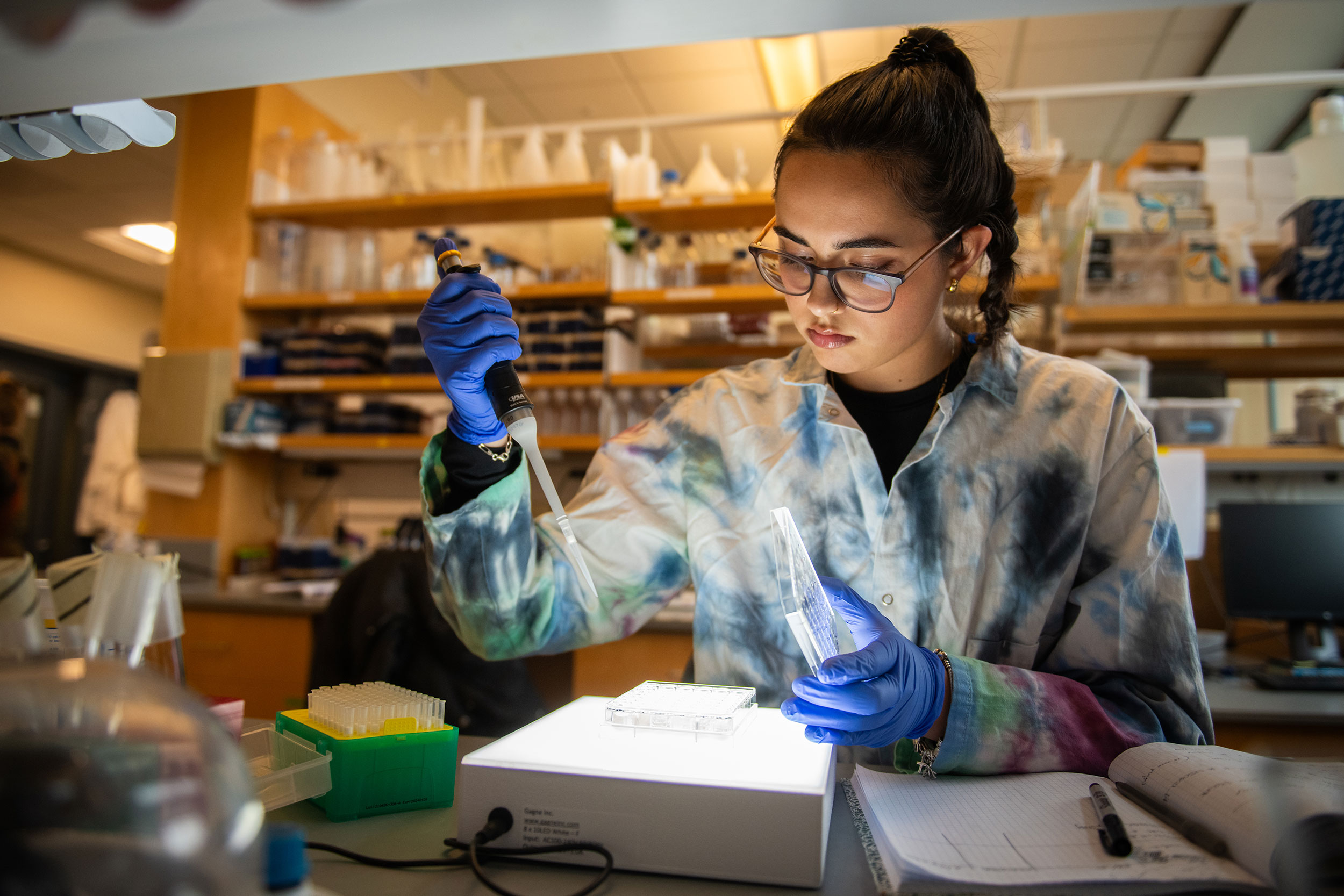
Providing research experience for students
Since its launch in 2020, the NSF-funded research project has supported nine undergraduate students working in Ahlgren’s lab — MacKenzie, Cameron McIlvenna ’23, Dukilda Hasanllari ’23, Dariy Vykhodtsev ’23, Angell Jean-Laurent ’24, Eric Litvack-Winkler ’24, Emily Rosenbaum ’24, Devon Rose Leaver ’24, M.S. ’25, and Kavi Francis ’26; a Ph.D. student, Reynaldo Ponce; and a postdoctoral researcher, Brent Robicheau, whose research on phytoplankton in the North Atlantic explored the effects of coastal climate change. As part of their research with Ahlgren, Robicheau and Leaver will examine whether climate change also is affecting interactions between viruses and Synechococcus.
More undergraduate students have participated in the research by sequencing genetic material from the Synechococcus cultures as part of The Genome Project, an upper-level undergraduate biology course being taught this semester by Ahlgren and, in the past couple years, by Tabima. (MacKenzie’s research in the course led to her Microbial Genome Resources article.) Ahlgren also incorporates the research into his Viruses: Friends or Foes and microbiology courses.
“I took Professor Ahlgren’s virology class, and I’ve been able to apply the information I’ve learned here in the lab with that we’ve studied in the class,” says Jean-Laurent, a biology major who hopes to apply to medical school or a Ph.D. program in biomedical science. “I really enjoy getting the experience of working in a real lab. It’s been really great for me.”
Leaver became interested in marine biology and Ahlgren’s research when, in her first year at Clark, she took his microbiology class. A biology major and political science minor, she will start Clark’s Accelerated Degree Program in biology next fall.
“I really like the work that I do here because it allows me to think about the multiple perspectives of research,” Leaver says. “Sometimes you’re simply observing that an organism behaves a certain way, and you’re spending a lot of time going in depth about what that data means.” But over time, she adds, researchers might “find bigger implications, like uncovering shifts in population dynamics and even how things might move around the ocean because of climate change.
“It’s a bit mind-boggling,” she adds, “to think that something that you can’t really see can have major environmental or anthropogenic effects.”
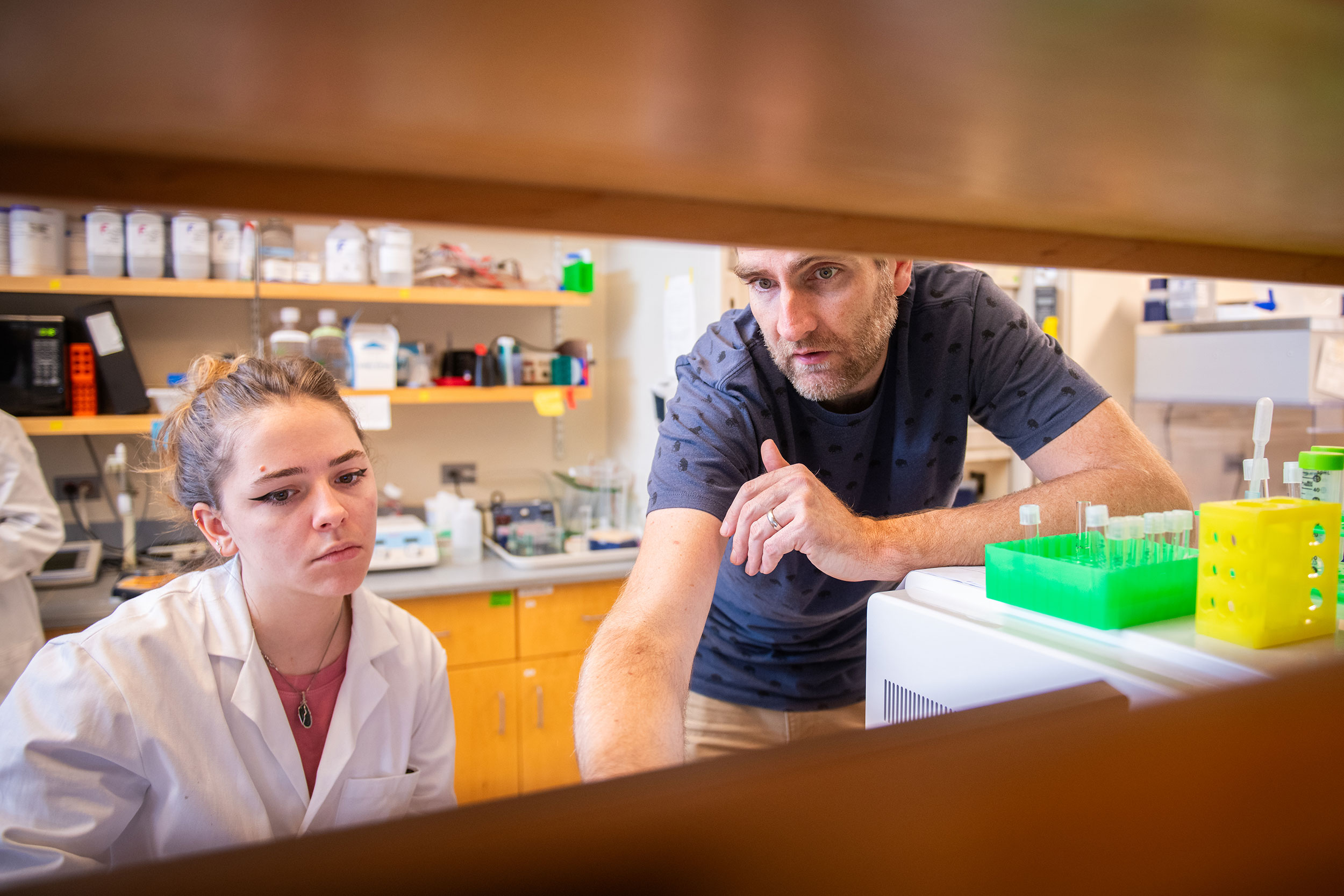
Photos by Steven King, University Photographer
